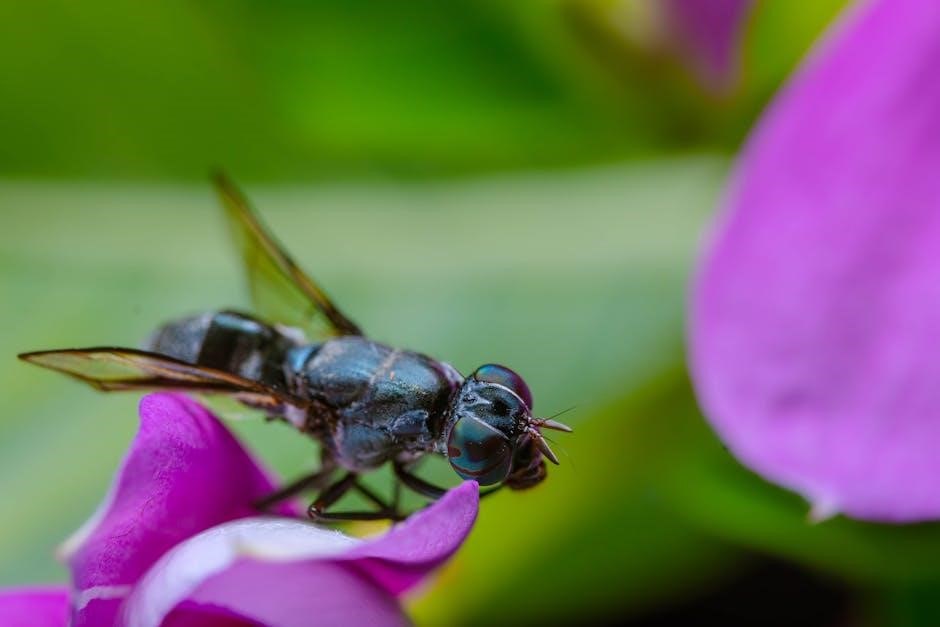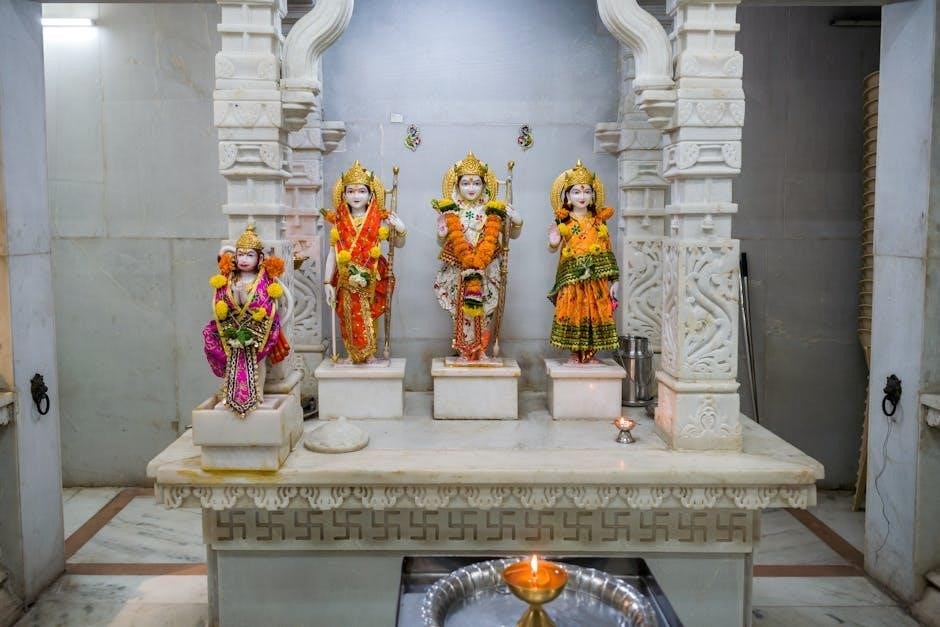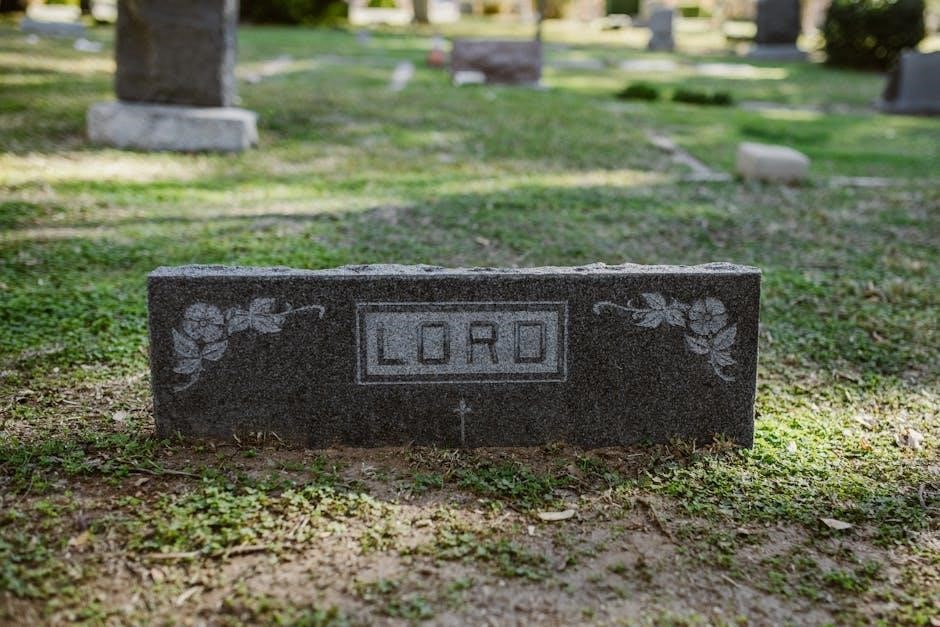Lord of the Flies: A Comprehensive Article Plan
This article presents a thorough exploration of William Golding’s “Lord of the Flies.” It delves into the novel’s plot and provides in-depth character analyses. Furthermore‚ symbolic elements such as the conch and signal fire are examined. Finally‚ prevalent themes of savagery and lost innocence are discussed.
William Golding’s “Lord of the Flies‚” published in 1954‚ stands as a significant work exploring the darker aspects of human nature. The novel emerged in the post-World War II era‚ a time marked by disillusionment and a questioning of societal values. Golding‚ who experienced the war firsthand‚ was deeply affected by the brutality he witnessed‚ leading him to explore humanity’s inherent capacity for savagery.
The book’s enduring popularity stems from its thought-provoking exploration of themes such as civilization versus savagery‚ the loss of innocence‚ and the inherent darkness within individuals. It challenges readers to confront uncomfortable truths about human behavior when removed from societal constraints. “Lord of the Flies” prompts reflection on the fragile nature of order and the ease with which individuals can succumb to primal instincts. It serves as a cautionary tale‚ urging society to address the potential for darkness that resides within us all‚ as downloadable PDFs and study guides aid in deeper exploration.

Synopsis of the Novel
“Lord of the Flies” begins with a group of British schoolboys stranded on a deserted island after a plane crash during a wartime evacuation. With no adults to guide them‚ they attempt to establish a society and govern themselves. Ralph‚ elected as leader‚ prioritizes rescue and maintaining order‚ while Jack‚ driven by primal instincts‚ focuses on hunting and immediate gratification;
Initially‚ the boys cooperate‚ building shelters and establishing a signal fire. However‚ as time passes‚ their civilized facade crumbles‚ and they succumb to their baser instincts. Jack’s influence grows‚ and he forms a tribe of hunters who embrace savagery. The boys become increasingly obsessed with hunting‚ rituals‚ and tribalism‚ leading to violence and the tragic deaths of Piggy and Simon. The island‚ once a paradise‚ transforms into a battleground as the boys descend into chaos. Ultimately‚ their descent into savagery is interrupted by the arrival of a naval officer‚ highlighting the boys’ loss of innocence and the failure of their attempt at self-governance‚ a story detailed further in downloadable PDFs.
Character Analysis: Ralph
Ralph‚ the elected leader in “Lord of the Flies‚” embodies civilization‚ order‚ and rational thought. Initially‚ he strives to establish a functional society on the island‚ emphasizing the importance of building shelters and maintaining a signal fire for rescue. Ralph is committed to upholding rules and promoting the well-being of the group‚ prioritizing long-term goals over immediate gratification.
As the boys descend into savagery‚ Ralph struggles to maintain control and reason. He becomes increasingly isolated as Jack’s influence grows and the other boys succumb to their primal instincts. Despite facing opposition and losing support‚ Ralph clings to his principles and refuses to abandon his commitment to civilization. He serves as a symbol of hope and the potential for order amidst chaos‚ even as the island descends into violence. In the face of growing savagery‚ Ralph’s unwavering belief in rules and rescue sets him apart‚ highlighting the conflict between civilization and primal instincts‚ further explorable in PDF resources.
Character Analysis: Jack
Jack Merridew‚ the antagonist in “Lord of the Flies‚” represents savagery‚ primal instincts‚ and the allure of power. Initially a choirboy‚ Jack quickly embraces the freedom of the island and becomes obsessed with hunting. He challenges Ralph’s leadership‚ appealing to the boys’ desires for immediate gratification and excitement.

As the novel progresses‚ Jack’s influence grows as he taps into the boys’ primal fears and desires. He uses face paint to mask his identity and shed his inhibitions‚ becoming increasingly ruthless and violent. Jack establishes a tribe based on hunting‚ feasting‚ and ritualistic behavior‚ offering the boys a sense of belonging and power that Ralph’s civilized approach cannot match. He embodies the descent into savagery‚ prioritizing immediate gratification over long-term goals‚ ultimately leading to chaos and destruction‚ aspects further detailed in downloadable PDFs.
Jack’s character highlights the inherent human capacity for evil and the seductive nature of power.
Character Analysis: Piggy
Piggy‚ a central figure in “Lord of the Flies‚” embodies intellect‚ reason‚ and civilization. Physically vulnerable due to his weight and asthma‚ Piggy compensates with his sharp mind and unwavering commitment to logic. He is the intellectual foil to Ralph’s charismatic leadership‚ often providing the ideas and solutions that Ralph struggles to articulate.
Piggy’s glasses‚ which are used to start the signal fire‚ symbolize his intellectual clarity and the power of reason. He is a constant advocate for rules‚ order‚ and the importance of thinking things through. Despite facing ridicule and bullying from the other boys‚ particularly Jack‚ Piggy remains steadfast in his beliefs. His unwavering commitment to civilization makes him a target for the growing savagery on the island.
Piggy’s tragic death at the hands of Jack’s tribe represents the triumph of savagery over reason and the devastating consequences of abandoning intellect and empathy. His demise underscores the fragility of civilization in the face of primal instincts‚ information further accessible in PDF study guides.
Symbolism: The Conch Shell
The conch shell in “Lord of the Flies” is a potent symbol of civilization‚ order‚ and democratic process. Initially discovered by Ralph and Piggy‚ it is used to call the boys together and establish a system for orderly meetings. Whoever holds the conch has the right to speak‚ and no one else is allowed to interrupt.
This rule represents the importance of listening‚ respecting diverse opinions‚ and maintaining a structured society. As the boys descend into savagery‚ their respect for the conch diminishes. Jack and his hunters increasingly disregard its authority‚ prioritizing hunting and primal urges over civilized discourse.
The eventual destruction of the conch‚ along with Piggy’s death‚ marks the complete collapse of order and the triumph of savagery on the island. The shattering of the conch symbolizes the loss of reason‚ the disintegration of societal structures‚ and the descent into a state of chaos and primal violence. Its demise is a key turning point and thoroughly documented in available PDF resources.
Symbolism: The Signal Fire
The signal fire in “Lord of the Flies” embodies the boys’ hope of rescue and their connection to civilization. Ralph prioritizes maintaining the fire‚ viewing it as their primary means of attracting attention from passing ships or planes. The fire represents reason‚ foresight‚ and the desire to return to the structured world they left behind.
However‚ the boys’ negligence and growing obsession with hunting lead to the fire frequently burning out. Jack and his hunters‚ consumed by their primal instincts‚ often neglect their duties to maintain the fire‚ valuing immediate gratification over long-term goals. The dwindling fire mirrors the boys’ fading hope and their increasing detachment from civilization.
When the fire burns out completely‚ it signifies the loss of hope and the triumph of savagery. Ironically‚ the boys’ hunting activities eventually lead to a fire that attracts a ship‚ but this occurs only after they have descended into complete barbarism. The signal fire‚ therefore‚ represents a lost opportunity and a stark reminder of the consequences of prioritizing primal urges over reason and responsibility‚ as highlighted in PDF analyses of the novel.
Symbolism: The “Lord of the Flies” (Pig’s Head)

The “Lord of the Flies‚” the pig’s head impaled on a stick‚ serves as the most potent symbol of primal savagery and the inherent evil residing within the boys. Initially left as an offering to the mythical beast‚ it quickly becomes a physical manifestation of the darkness that consumes the island community.
The pig’s head‚ swarming with flies‚ represents the decaying morality and the descent into barbarism. It embodies the boys’ fears and anxieties‚ projecting their inner demons onto an external object. Simon’s hallucinatory encounter with the “Lord of the Flies” reveals the truth: the beast is not an external entity but a force residing within themselves.
Furthermore‚ the “Lord of the Flies” symbolizes the corruption of innocence and the triumph of primal instincts. It mocks the boys’ attempts at civilization‚ reminding them of the futility of their efforts to suppress their inherent savagery. Through this gruesome symbol‚ Golding explores the dark depths of human nature‚ suggesting that evil is not an external force but an intrinsic part of the human condition‚ as detailed in various “Lord of the Flies” PDF analyses.
Themes: Savagery vs. Civilization
The central conflict in “Lord of the Flies” revolves around the tension between savagery and civilization. Initially‚ the boys attempt to establish a civilized society‚ mirroring the values they learned in their British schooling. Ralph‚ with his focus on rules and order‚ embodies this civilized impulse. He prioritizes building shelters and maintaining a signal fire‚ representing hope and a connection to the adult world.
However‚ as time passes‚ the allure of primal instincts grows stronger. Jack‚ driven by a desire for hunting and immediate gratification‚ represents the descent into savagery. His painted face becomes a mask‚ allowing him and his followers to shed their inhibitions and embrace their darker impulses. The boys gradually abandon reason and empathy‚ succumbing to violence and superstition.
Golding uses this conflict to explore the fragility of civilization and the inherent potential for savagery within human nature. The island becomes a microcosm of the world‚ demonstrating how easily societal structures can crumble when faced with fear‚ desire‚ and the absence of authority. This theme is extensively analyzed in many “Lord of the Flies” PDF resources.
Themes: Loss of Innocence
“Lord of the Flies” poignantly illustrates the loss of innocence experienced by the boys stranded on the island. Initially‚ they are innocent children‚ eager to play and build a society. Ralph’s naiveté is evident in his belief that they can easily maintain order and be rescued. Piggy‚ with his unwavering faith in reason and intellect‚ embodies the remnants of childhood innocence.
However‚ the harsh realities of their situation and the growing influence of savagery gradually erode their innocence. As the boys succumb to primal instincts and violence‚ they lose their sense of morality and empathy. The hunt for pigs becomes increasingly brutal‚ and the games they play turn dangerous. The tragic deaths of Piggy and Simon mark the complete loss of innocence‚ symbolizing the triumph of savagery over reason and compassion.
Golding suggests that the loss of innocence is an inevitable part of growing up and facing the darker aspects of human nature. The island serves as a crucible‚ exposing the boys to the harsh realities of life and forcing them to confront their own inner demons. This theme is frequently discussed in “Lord of the Flies” PDF study guides.
Downloadable PDF Resources and Study Guides
To further enhance your understanding of “Lord of the Flies‚” a variety of downloadable PDF resources and study guides are available. These materials provide comprehensive analyses of the novel’s themes‚ characters‚ and symbolism‚ offering valuable insights for students and educators alike.

Many websites offer free PDF versions of the complete novel‚ allowing you to read the text directly. Additionally‚ you can find character analysis PDFs that delve into the motivations and development of key figures like Ralph‚ Jack‚ and Piggy. Symbolism guides are also accessible‚ explaining the deeper meanings behind the conch shell‚ the signal fire‚ and the “Lord of the Flies” itself.
Study guides often include chapter summaries‚ discussion questions‚ and essay prompts to facilitate critical thinking and classroom engagement. Some resources even offer downloadable character maps and thematic charts to help visualize the novel’s complex elements. Whether you are a student preparing for an exam or a teacher seeking supplementary materials‚ these PDF resources can significantly enrich your exploration of “Lord of the Flies.” Some provide scholar annotation tools‚ while others can be used to turn PDFs into ePapers.
